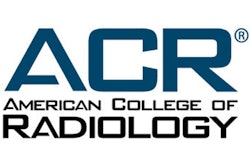Sunday, November 26 | 11:15 a.m.-11:25 a.m. | SSA04-04 | Room S504AB
In this study, Dutch researchers used software to semiautomatically estimate fractional flow reserve (FFR) from coronary CT angiography (CCTA) images. They found that the technique increased the speed and accuracy of diagnosing stenosis in coronary arteries.Fractional flow reserve derived from CCTA scans has been used to identify stenosis, but the technique has limited use in emergency settings due to its lengthy turnover time, Dr. Robbert van Hamersvelt from University Medical Center Utrecht in the Netherlands told AuntMinnie.com.
"Recently a novel noninvasive rapid onsite estimation of CT angiography-derived fractional flow reserve using a lumped parametric model has been introduced," he said. "Segmentations are made by the observer, after which calculations of [FFR-CCTA] take only a few seconds."
In this ongoing study, the researchers evaluated the diagnostic performance of this onsite estimation of FFR-CCTA in detecting coronary artery stenosis and compared it with the performance of conventional CCTA. Invasive, catheter-based FFR served as the reference standard.
Preliminary results showed that FFR-CCTA led to considerably higher areas under the curve (0.79) than coronary CT angiography (0.61) for detecting coronary artery stenosis per vessel.
"This rapid onsite FFR-CT has the ability to increase the specificity of CCTA, thereby potentially reducing the number of patients unnecessarily referred for catheter-based FFR," van Hamersvelt said. "However, as the current study is ongoing, final results and further studies have to confirm our preliminary results."




















